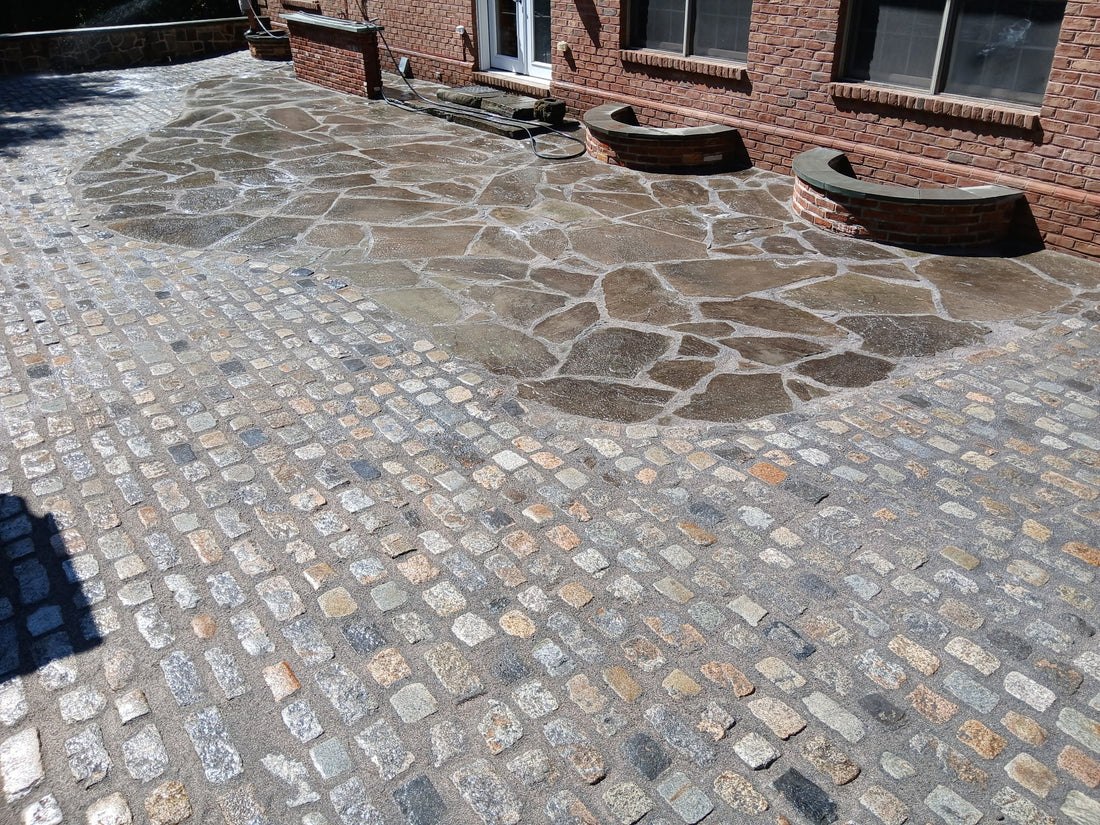Understanding Irregular Bluestone: A Timeless Choice for Your Landscape
When it comes to natural stone for landscaping and hardscaping projects, few materials offer the unique character and enduring beauty of bluestone. Among the various forms, irregular bluestone stands out, offering a more rustic, organic, and often more budget-friendly option compared to its cut and uniformly shaped counterparts. But what exactly is irregular bluestone, and why has it remained a popular choice for homeowners and designers alike in 2025?
The Essence of Irregular Bluestone
Irregular bluestone, also known as flagstone or irregular flagstone, refers to natural stone pieces that are quarried and then broken or cut into shapes that are not perfectly uniform or geometric. Unlike dimensional bluestone, which is cut into precise squares, rectangles, or specific shapes, irregular bluestone retains a more natural, freeform appearance. These pieces typically have varying thicknesses, lengths, and widths, creating a charmingly random and eclectic look when laid.
The term "bluestone" itself generally refers to a type of sandstone that possesses a distinct blue, gray, or sometimes greenish hue. This coloration arises from the presence of minerals like feldspar and mica within the stone. The specific shade can vary significantly depending on the quarry and geological conditions under which it was formed.
Key Characteristics of Irregular Bluestone
Irregular bluestone is prized for several distinct characteristics that make it ideal for a wide range of outdoor applications:
- Natural Beauty: Its inherent variations in shape, size, and color lend a unique, organic aesthetic that complements natural surroundings beautifully.
- Durability: Bluestone is known for its exceptional hardness and resistance to weathering, making it suitable for high-traffic areas and climates with harsh conditions. It can withstand freeze-thaw cycles, heavy foot traffic, and UV exposure.
- Versatility: While irregular in shape, it can be used to create stunning patios, walkways, stepping stones, garden borders, wall caps, and even indoor flooring for a rustic feel.
- Non-Slip Surface: Bluestone generally has a naturally cleft surface that provides good traction, making it a safe choice for outdoor areas where moisture might be present.
- Cost-Effectiveness: Often, irregular bluestone is more economical than dimensional bluestone because it requires less processing and labor to prepare for installation.
Applications for Irregular Bluestone in 2025 Landscapes
The versatility of irregular bluestone means it can be incorporated into virtually any outdoor design. Here are some popular applications making waves in 2025:
Patios and Seating Areas
Irregular bluestone creates captivating patios that feel naturally integrated into the landscape. The random patterns allow for creative layout designs, whether you prefer a more freeform, meandering look or a tightly fitted, mosaic-like appearance. The earthy tones blend harmoniously with garden greenery.
Walkways and Garden Paths
For a charming and inviting garden path, irregular bluestone is an excellent choice. The stones can be laid with gaps filled with gravel, moss, or ground cover, enhancing the natural, woodland feel of a garden. They also serve as elegant stepping stones, guiding visitors through your outdoor space.
Retaining Walls and Edging
Thicker pieces of irregular bluestone can be utilized to construct low retaining walls or to create sturdy, attractive edging for garden beds and pathways. This adds a sense of permanence and natural beauty to the garden's structure.
Water Features and Pool Decks
The inherent slip-resistant quality and aesthetic appeal of bluestone make it a desirable material for areas around water features and swimming pools. It offers a safe and beautiful surface that complements the aquatic environment.
Installation Considerations
While irregular bluestone offers a natural look, its installation requires careful planning and execution. Key considerations include:
- Site Preparation: Proper base preparation, including a compacted aggregate layer, is crucial for stability and drainage, especially for patios and walkways.
- Layout Design: Planning the arrangement of stones to minimize waste and create a visually pleasing pattern is important. Laying out the stones dry before final placement can help achieve this.
- Grouting or Filling: Depending on the desired look and function, gaps between stones can be filled with polymeric sand, mortar, gravel, or planted with ground cover.
- Thickness: Ensure the thickness of the irregular bluestone pieces is appropriate for their intended use. Thicker pieces are better for areas that will bear weight or for structural applications.
Maintaining Your Irregular Bluestone in 2025 and Beyond
One of the significant advantages of irregular bluestone is its low maintenance. Regular sweeping to remove debris is usually sufficient. Occasional washing with water and a mild detergent can help maintain its appearance. Sealing is generally not required, as bluestone is naturally resistant to stains and weathering. However, for heavily trafficked areas or to enhance its color, some homeowners opt for a penetrating sealer.
Conclusion: The Enduring Appeal of Irregular Bluestone
In 2025, irregular bluestone continues to be a top choice for those seeking natural beauty, durability, and a unique character for their outdoor spaces. Its ability to blend seamlessly with any landscape, coupled with its practical advantages, ensures that this timeless material will remain a beloved option for years to come. Whether you're designing a new patio, refreshing a garden path, or adding a touch of natural elegance to your property, irregular bluestone offers an unparalleled combination of form and function.

